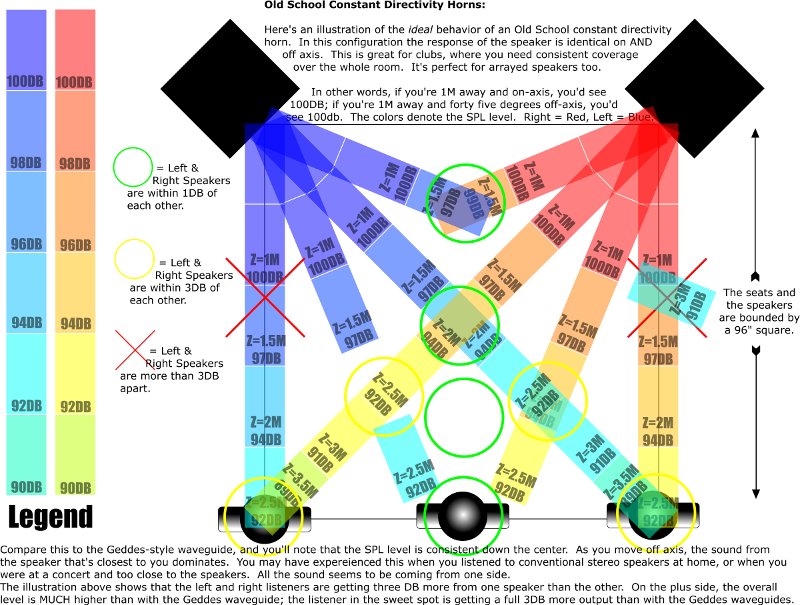This might be warping the relevance for most here in the context of toe in. I have seen plenty of stereo listeners, reviewers included, obsess about toe in. But, the topic just does not seem to come up among multichannel listeners, like me. Since much of proper Mch setup is all focused on the sweet spot, we just tend to set up our speakers pointed dead at it. I have also seen this at the few recording control rooms I have visited.
Our speaker arrays in Mch are pretty well defined by Dolby or DTS for movies or ITU for music (they are all fairly compatible) in terms of a standard, defined angular layout and equal distance from the sweet spot. The distance issue is solved either by equidistant physical placement or it is corrected by DSP in time delay and volume level.
There are no such standards for stereo, and speaker placement has been totally loosey goosey in use and by tradition. There are rules of thumb, like equilateral triangle, but not everybody adheres to that. Toe in would seem to be a subjective fine-tuning adjustment for frequency balance and/or lateral imaging. Both are the result changing the mix of direct and reflected sound interactions with the room in a largely unpredictable way. We have no way of knowing what speaker placement the stereo recording engineers recorded, mixed and mastered for or used in their process, unlike Mch. We do not know exactly the soundstage image they were seeking in stereo or in Mch either.
Another current trend is the increasing use of a full range DSP EQ target curve, which is a different way, perhaps a superior way to toe in, to get the frequency balance where it is subjectively preferred. That is also quite common in Mch systems, and even some recording engineers now use it on their monitoring systems. The use of full range EQ would counteract some of the effects of toe in, at least in attempting to "improve" the frequency response of the system. But, "enhanced" imaging would seem to be the major goal of tweaking the toe in. Frequency response might be less affected by toe in if speaker directivity is more controlled, along the lines recommended by Toole.
Of course, the thought of fiddling with the toe in of 6 of the 7 (no toe in for the center channel) speakers in a 7.1 array is also not going to appeal to many. Besides, the spatial imaging is much more well defined by the discrete Mch recording process itself and delivered by the speaker array.
So, in my Mch setup, I just array the speakers according to the ITU angles, point them at the sweet spot with a laser, calibrate my EQ and distance correction, and I am mostly done. I look at the measured and predicted results. I might find it necessary to adjust the subwoofer location for better response and make separate measurements. But, my results have been pretty good and pretty satisfying that way. I lose no sleep over toe in.
THX was mentioned, by the way. It has its own speaker placement and speaker type directives - dipole or bipole surrounds not directly facing the sweet spot. But, I never liked it and the vague imaging it provides, especially on music. I also think it is passé these days compared to discrete formats like Dolby True HD and DTS HD Master Audio without adding a fuzzy wuzzy layer of additional processing.

